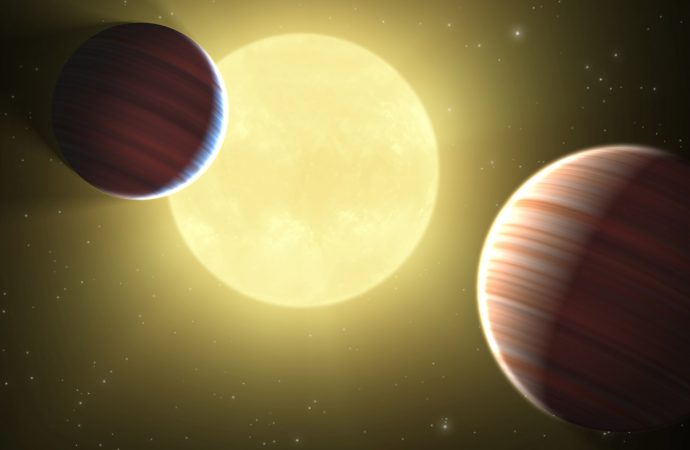At a distant star called Kepler-223, four gas giant planets orbit close in to their sun. It couldn’t be more different from our own solar system today, where all the big planets hang out far away. But could Kepler-223 be how our solar system was long ago?
Based on observations from the Kepler space telescope, a new study suggests yes. Perhaps Jupiter, Saturn, Uranus and Neptune were created close in to the sun. Over time, their gravities working together helped pull them away from the disc of gas and dust surrounding our sun. Once the giant planets cleared, this created room for the small planets living near the sun today: Mercury, Venus, Earth and Mars.
“Exactly how and where planets form is an outstanding question in planetary science,” said lead author Sean Mills, a graduate student in astronomy and astrophysics at the University of Chicago, in a statement. “Our work essentially tests a model for planet formation for a type of planet we don’t have in our solar system.”
The new study comes from a combination of Kepler data — which showed how the four planets affect each other’s movements and block light from the star — and simulations of how planets migrate.
There are differences from our own solar system, however. Kepler-223 is older (4.6 billion years) and so its planets have stayed in place much longer than ours, if they did migrate.
But there is something interesting about this system. The four planets are in resonance with each other, meaning that they orbit in a simple ratio to each other (such as 2 orbits for every 1). This is the first time four planets have been seen in resonance.
“These resonances are extremely fragile,” said study co-author Daniel Fabrycky, an assistant professor of astronomy and astrophysics at the University of Chicago, in the same statement. “If bodies were flying around and hitting each other, then they would have dislodged the planets from the resonance.”
So in our own solar system, perhaps the four gas giants were in resonance — but then were hurled into new orbits over time after hitting asteroids, planets in formation and other debris in the inner solar system.
One key mystery, if that is the case, is how come there was so much intervening debris in our solar system, but Kepler-223 stayed stable for much longer. More study will be needed to better figure this out.
Source: Discovery News

































Leave a Comment
You must be logged in to post a comment.